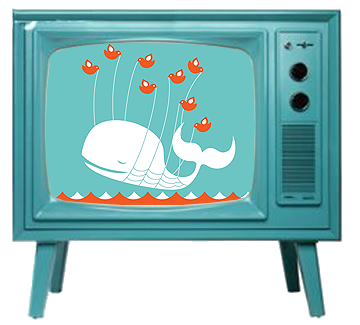Surrounding us in our daily lives, social media is a driving force that is shaping everything we do. News comes faster, conversations grow longer, more videos go viral, creating a wider and deeper sphere of interaction. Social media goes beyond cyber space, changing the way industries work, especially television. What once was talked about the next day with friends and family, live TV is now discussed moment to moment during the first time an episode airs. With viewers getting more involved in live TV, social media is creating a bigger and better world for TV networks and shows.
With cliff hangers, plot twists, and other surprises, live TV does a great job of keeping their audiences hooked throughout an episode, and it also instills in viewers that dying-to-know feeling, they just have to know what happens next ASAP! And there are always those OMG-did-that-really-just-happen moments that people absolutely must be the first to talk about right away. Providing an outlet for the instant communication viewers to crave, social media gives users a way to connect, discuss, and create new topics surrounding TV shows, and it seems to be paying off for Live TV. Sproutsocial.com mentioned that a Nielsen and SocialGuide study found that an 8.5 percent increase in tweets can equal a one percent lift in ratings, demonstrating that ratings are now tightly entwined with social media. This means that for live TV to be successful, networks need to embrace social media, and they are doing just that.
Relying heavily on hashtags and Twitter handles, TV networks push viewers to discuss before, during, and after what’s happening in each new episode. While flashing a show’s official hashtag or Twitter handle on screen during an episode welcomes viewers to get involved in social media, networks also incorporate madlib hashtags, which are clever conversation starters. Consider the show “Pretty Little Liars” or #PLL, which was the most-tweeted cable TV show in 2012 and accounted for more than 52% of all Twitter activity on the day the show returned in 2013. #PLL loves using madlib hashtags, which pop up on screen during dramatic scenes. Capstrat.com found that in the episode “Dead to Me” that aired 2/5/13, #PoorSpencer appeared and gained over 22,800 mentions within a week.
Madlib hashtagging has become so popular that shows, specifically talk shows, are creating hashtag sketch segments. Take Late Night with Jimmy Fallon, which does a segment called Late Night Hashtags. This past week Fallon tweeted asking viewers to post raps about sharks for Discovery Channel’s Shark Week using #SharkRap. Within thirty minutes after Fallon’s tweet, #SharkRap became a world-wide trending topic. By incorporating madlib tweets, viewers are not only encouraged to connect with Late Night through social media, but they are also lured to watch live to see if their content has made it on air.
Social media plays an even greater role for some TV shows, such as Andy Cohen’s “Watch What Happens Live,” which prides itself on being a show that’s all about live social media interaction. Influencing the show as it’s being recorded, viewers respond to content, polls, and questions, which gives these viewers a sense of ownership. It’s not nearly as much fun watching the show if a viewer isn’t interacting with a smart phone or tablet, nor is it as enjoyable to watch after it first airs for it takes away a viewer’s ability to participate. By focusing on social interaction, shows like this perpetuate the need for live TV, which is exactly what networks want.
Another way shows and networks entice viewers to watch live is through having the actors on the show live tweeting. Including actors’ tweets in the mix creates an intimate experience between fans and actors as they are experiencing the same thing at the same time, much like watching new episodes together. Take how #PLL has their actors live tweeting pictures of their reactions during an episode. It’s as if your BFF is sending you a snapchat.
Generating more publicity or dictating show content, the use of social media encourages viewers to watch live TV. Whether it be because of hashtags, to have a virtual relationship with their favorite actors, or because viewers don’t want to see spoilers on their newsfeeds, live TV is the major forerunner for how viewers screen TV today.





